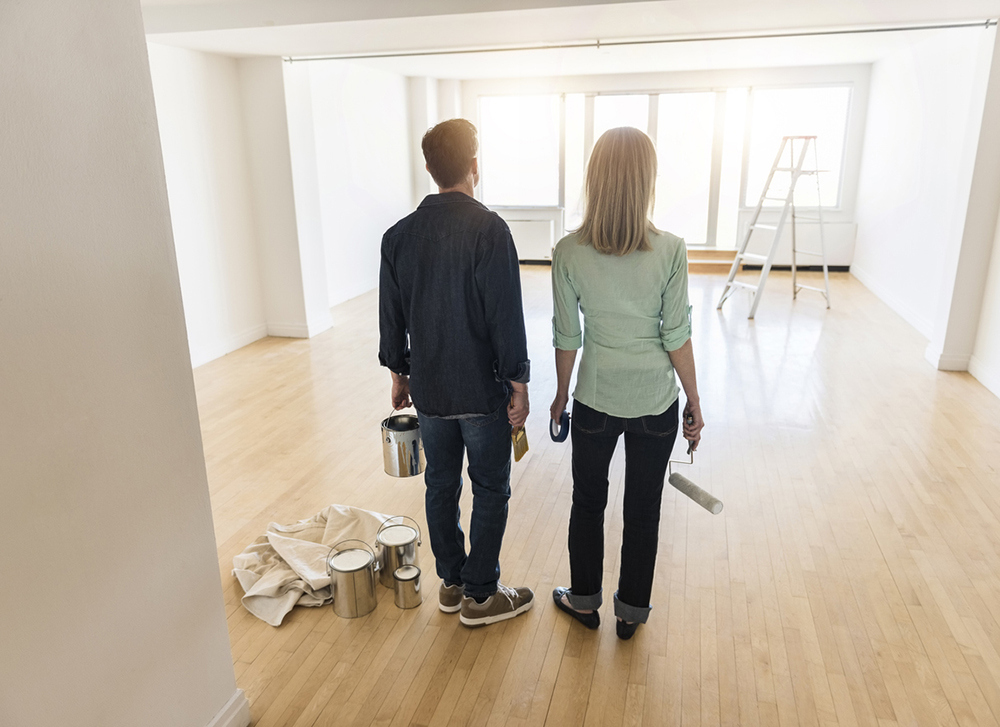
If you’re seeking quiet elegance and charm in your space, adding vertical wood panels on your walls—commonly known as wainscoting—is the perfect solution. Extending about one-third of the way up the wall, they provide insulation while adding depth and visual interest to any area. To enhance the look further, you can incorporate molding on your baseboard and ceiling for a truly stunning finish!
5 Main Types of Wainscoting and How to Choose
- Raised panel: A traditional type of wainscoting, a raised panel features deep, beveled edges that are up to 30-40 inches in height, and has a raised center about 3 to 5 feet above the floor. This makes for a great choice if you want to add a traditional and classic touch to any formal dining room or home office.
- Flat panel: A more contemporary and clean-lined option, flat panel wainscoting has a modern and minimalistic look. Add it to small spaces like foyers or powder rooms for a unique style.
- Beadboard: If you are looking for a comfy, cottagey feel, then beadboard is the right choice for you. It consists of narrow vertical boards equally spaced, with grooves between each board, adding visual interest to your room.
- Overlay: This type of wainscoting combines both raised panel and flat panel wainscoting to create a layered, dimensional look. It adds a classic elegance with a bit more depth than the standard flat or raised panel design.
- Board and batten: This style of wainscoting features narrow vertical strips of wood over a flat panel or wall surface with a horizontal flat board at the top as well as the bottom. It has a higher paneling of up to 55 inches, while regular wainscoting is 42 inches. It’s a great addition to a traditional farmhouse look.
Different Types of Moldings
- Crown: As the name suggests, crown molding looks like a crown wrapped around the area where the wall meets the ceiling. It is one of the most popular types of moldings, comes in various styles, and can be customized depending on the size of the room.
- Baseboard: These trims are fitted in the area where the floor meets the wall and help protect the surfaces from scuff marks and wear.
- Chair rails: Running horizontally along walls, chair rails are often accompanied by wainscoting, and help protect walls against furniture being moved. You can usually find them in kitchen and dining areas, where tables and chairs are moved around quite often.
- Picture rails: Horizontally installed on the walls at a height of around 9 to 10 feet from the floor, picture rails allow artwork to be hung without damaging the walls.
- Door and window casing: These decorative moldings are useful for hiding gaps between the wall and the window or door, and give a more finished and elegant look to your room.
Transform Your Space with Wainscoting and Molding
The right wainscoting and molding can make your room look contemporary or traditional, depending on what you are looking for. But these are not just decorative accents – they protect your walls and add value and a sense of craftsmanship to your space. Whether you want to add a touch of elegance to your formal dining room or create a cozy home office, these details create a well-defined, stylish look.
Give your Philadelphia home’s interior a fresh new look with Mastercraft Painting and Finishes – your trusted local experts serving Montgomery & Bucks County, PA. Contact us at 267-496-5307 or visit us online for a FREE estimate.
